Forgotten Victims of Harvey – the Pollinators
Friday, September 15th, 2017 at 4:47 pm by Monarch WatchFiled under Monarch Conservation | Comments Off on Forgotten Victims of Harvey – the Pollinators
We recently received the following account of the hurricane and the alarmingly low number of pollinators post-Harvey. ~Monarch Watch
by Barbara Keller-Willy
Director & Founder, Monarch Gateway
President, Native Prairies Association of Texas
(Written over the course of hurricane Harvey with closing completed after the hurricane.)
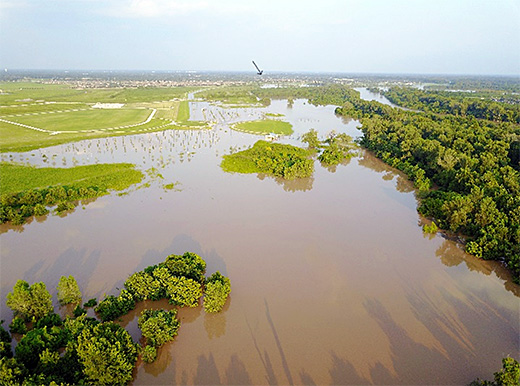
I am writing from Sugar Land, Fort Bend County, Texas where my home is located approximately 2 miles from the Brazos River, which is scheduled to crest at 59 feet above sea level, the highest level ever recorded. Over the course of three days, we’ve received a record-breaking 51.5” of rain from the category 4 hurricane Harvey and are under a voluntary evacuation order. Hospitals, grocery stores, pharmacies and restaurants are all closed. Some people in my subdivision are using kayaks and canoes to navigate their street. Coast Guard helicopters fly overhead on a regular basis. Our latest social media communication from the city stated “If you can’t flush toilets, no cause for alarm – just give it time, the system will catch up as water recedes.” And after watching 3 days of hurricane coverage showing others more badly affected, I was grateful for that communication. You really can’t imagine the number of things we take for granted until faced with disaster. Now imagine that disaster is a 1000 year flood resulting from a hurricane going on outside while you have 389 Monarch caterpillars to feed inside…
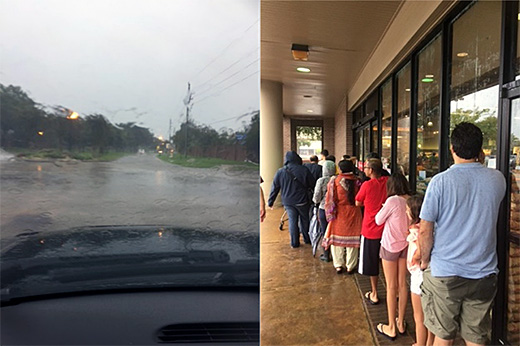
Pre-Harvey
As I rushed to complete pre-hurricane Harvey preparations, one more task was added to my list that was different from previous storm preparations, picking up monarch caterpillars. My first call came from the leader of a partnering organization. I met to accept my first box of caterpillars in the parking lot of Gallery Furniture, which one day later would become a temporary shelter for local evacuees and an overnight hostel for the activated National Guard. I accepted my final container of monarch caterpillars at the HEB parking lot where I expected to make a quick grocery run and instead found a 50 minute wait in the pouring rain outside locked grocery store doors manned by the store manager to prevent uncontrolled crowds fighting for necessities like water, eggs and milk. People deliver caterpillars in all manner of open boxes, and so my normal 10 minute drive home became a much longer drive through traffic, high waters, windshield wipers unable to keep up with falling rain, and moving caterpillars trying to escape their box.
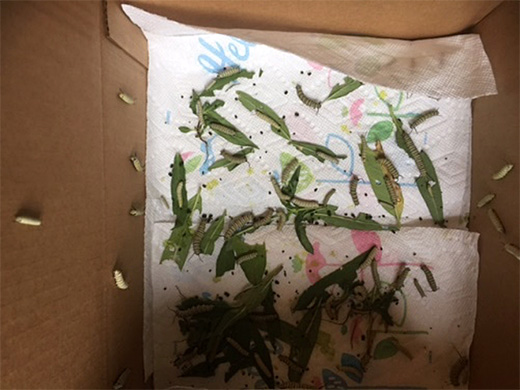
Over the course of two days I collected caterpillars, farming some out to local enthusiasts until I ran out of available enthusiasts. I already had 80 caterpillars of my own I was raising for our 2017 annual Monarch Madness Festival. Some of the people asking me to adopt their cats were evacuating. Others couldn’t slosh through wet yards to collect milkweed. Still others expressed fear the caterpillars would die in the rain and some were simply running out of milkweed, having misjudged the number of plants it would take to feed the quantity of caterpillars on their plants. Surprisingly, nobody feared losing their caterpillars to flood which turned out to be the greatest threat.
I thought long and hard before accepting the caterpillars. Unlike some of the donors, I knew exactly how many plants it would take to feed 389 caterpillars. I also knew that many of the caterpillars I was accepting were likely born of butterflies infected with OE, a dormant protozoan carried by the monarch that is then deposited onto the egg sack and consumed by the caterpillar. Still others were likely preyed upon by tachinid flies, as it is the height of their season.
The value of saving these caterpillars was about much more than the cats themselves. These caterpillars represented Houston and Sugar Land monarch enthusiasts I had a part in growing. The reality of monarch conservation is that children and adults grow to love the butterflies produced from THEIR school, park and backyard gardens that I asked them to create and that love will help this species recover. Now those monarch enthusiasts trusted me to keep the product of their work and love alive. I said yes.
Last May, at the Texans By Nature Milkweed Symposium, Dr. Chip Taylor of University of Kansas’s Monarch Watch proposed that monarch butterflies are a metaphor for ourselves and our ability to save them speaks to our ability to sustain our own species. If that is true, I reasoned, then my ability to save these 389 caterpillars could be said to represent Houstonians’ and my own ability to survive hurricane Harvey. So I committed to become the surrogate guardian of more caterpillars than I ever raised in the middle of the worst hurricane in US history. I set up an indoor operation which included mesh butterfly cages and little cup nurseries. I sloshed through ankle deep water, hail, sleet and stinging rain blowing sideways twice a day to collect my own and my neighbors’ fresh milkweed.
On day one a tree fell on our fence and in the dark of night two, I stepped into the kitchen to feel water on my feet. Sleet, an unusual occurrence in Houston was clinging to shingles, brick and overflow pipes damaging our roof. Water was dripping from the roof into our kitchen cabinets, filling all the dishes before dripping into the controls of our electric stove below and across our kitchen. One of our hoop house type greenhouse roofs left the premise on high winds never to be found again. But all-in-all we are good and our damage was minor. I feel survivor guilt even voicing our damage when others are being evacuated from roof tops and had lost everything.
In some ways we are nearing the end of this storm and in others we haven’t yet seen the worst conditions. When the Brazos River crests, it has the ability to impact Monarch Gateway’s signature event, the annual fall Monarch Madness Festival, a family friendly, monarch butterfly and pollinator conservation festival. During this event Monarch Gateway awards the annual Catalina Aguado Trail Young Naturalist Award and scholarship to a young person contributing to monarch conservation. If Brazos Bend State Park is flooded when the river crests, as happened last year during the Memorial Day floods, the park will close for cleanup, impacting our September 24th festival.
Post Harvey, Pre-Brazos River Cresting
Texas Parks and Wildlife Department announced the closure of Brazos Bend State Park which is already flooded and expects to sustain additional flooding when the river crests.
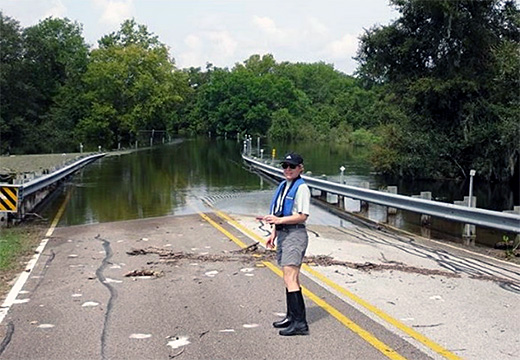
Figure 1A. 200′ to left is the BBSP Monarch Waystation which is not flooded but the only way to access the park is by canoe. David Heineke, photographer.
Staff at Brazos Bend State Park and George Observatory, a satellite site of the Houston Museum of Natural Science inside the park informed us we would need to find an alternate location for Monarch Madness as both are closed through October and expect a months-long cleanup period.
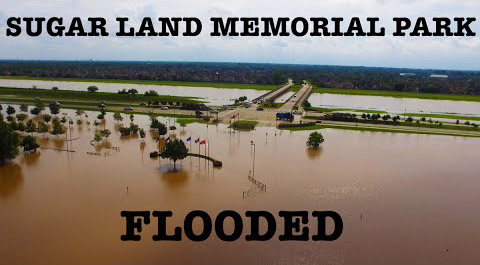
Figure 2. I live one mile down the road in center of this picture.
I left our home for the first time post-Harvey for an appointment in South Houston and as I drove, I looked for butterflies, which were absent in my yard since Harvey. I returned home aware I saw none, no bees, no butterflies, or even dragonflies, all of which usually return to my yard shortly after any storm. The life of the monarch butterfly is short, sometimes just 2-4 weeks long and it makes sense that many probably perished in hurricane Harvey as did the caterpillars on plants under flood waters.
I was grateful this storm did not occur just a couple of weeks later as monarch butterflies begin their annual migration through Texas to Mexico because Harvey’s heavy rain bands extended into many areas in the I35/migration corridor and its impact could have been great. All but the smallest caterpillars have now become chrysalis and the City of Meadows Place has agreed to host our annual Monarch Madness event if we can plan for the rescheduling of an entire festival in 3 weeks amidst all else.
Epilogue
We now know Harvey was a 40,000 year flood event by some calculations and a 1000 year event by others that delivered 9 trillion gallons of water to Texas with catastrophic results. In the week since hurricane Harvey, I have only seen one tiger swallowtail butterfly. Because my backyard is designed for wildlife and I’m in the business of noticing pollinators as I travel throughout my day, I estimate I normally see between 25 and 100 per day. My awareness of the various pollinators flitting around is a bit like white noise, I’m most aware when it stops. Harvey has presented me a real-life opportunity to view my city with no monarch butterflies or pollinators and it has piqued my determination.
As we all get back to normal life we can’t help but walk among people in various stages of grief and acceptance but in the end, we are all determined to survive, to rebuild our habitat, find the foods that sustain us and have a safe, dry place to rest at night, just like the monarch butterfly. There are many ways to help people after a natural disaster and each organization and person will gravitate toward that topic that speaks to their heart. My heart says go rebuild pollinator habitat so that the forgotten victims of Harvey, the pollinators, in all their life stages from caterpillar to winged adult can once again thrive in our communities. My heart says make as much of that habitat native prairie with its 15 foot deep roots that also help absorb future hurricane and storm runoff. If I can save hundreds of monarch caterpillars in the worst hurricane in U.S. history, increasing the monarch population is doable. I challenge you to stand with me, with Houstonians, with the Texan will to survive and help the monarch butterfly and other pollinator species survive too.
HOUSTON, UNITED STATES
08.29.2017

Gallery Furniture. Photo by Sgt. Steve Johnson, 100th Mobile Public Affairs Detachment


Sorry, comments for this entry are closed at this time.